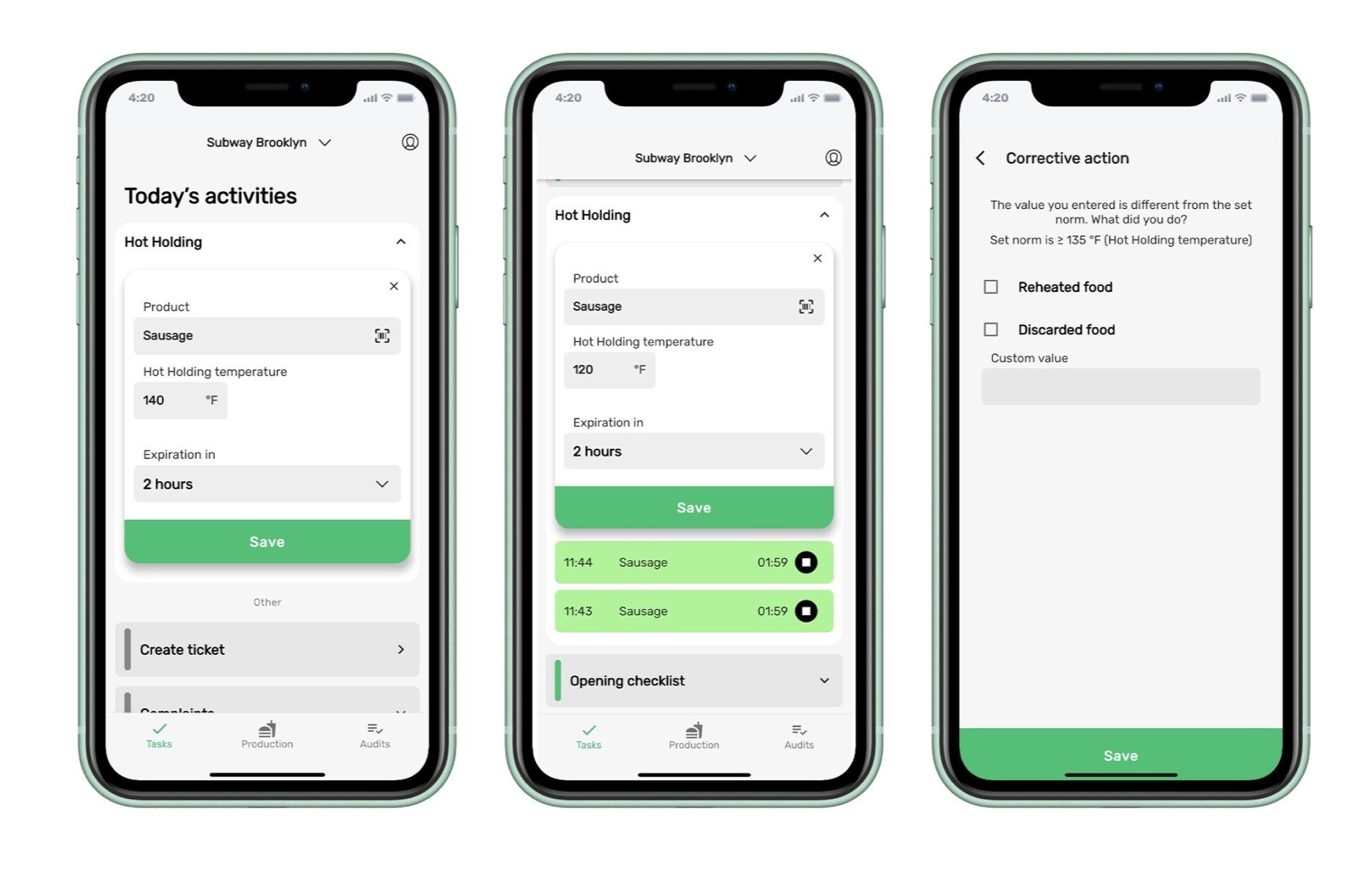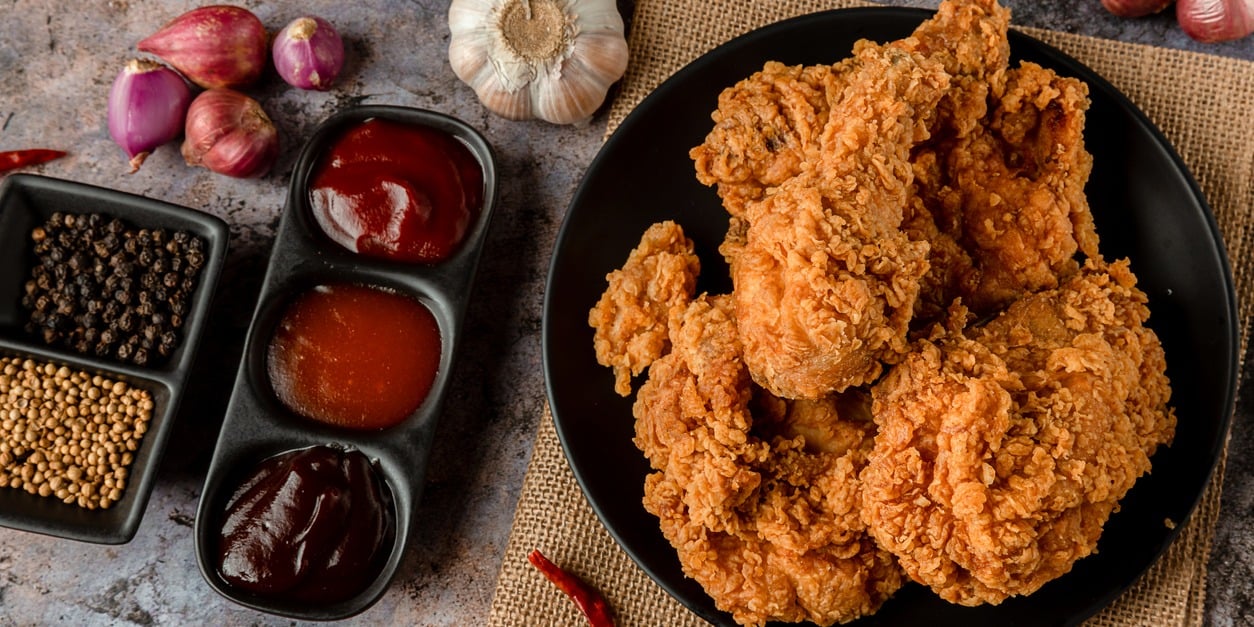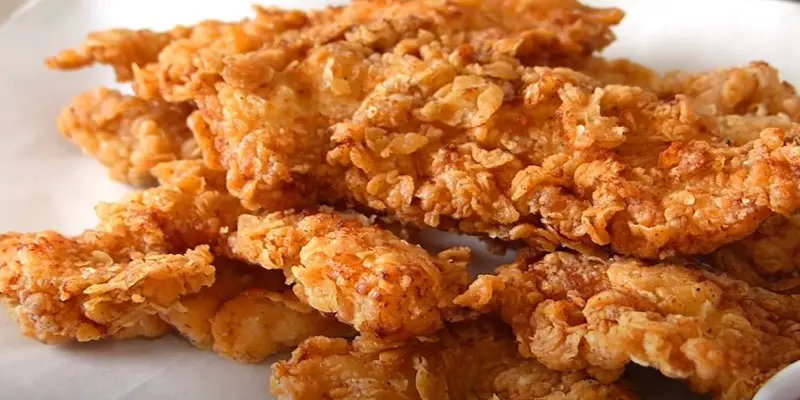The minimum hot-holding temperature requirement for chicken strips is 135 degrees Fahrenheit. Proper temperature control is essential to ensure the safety and quality of the chicken strips during storage and service.
Maintaining the correct hot-holding temperature helps prevent bacterial growth and ensures that the chicken remains safe to consume. Hot-holding units, such as warming trays or steam tables, should be set to keep the chicken strips at or above this minimum temperature to prevent foodborne illnesses.
By following these temperature guidelines, food establishments can provide customers with delicious and safe chicken strip dishes.

Credit: www.fooddocs.com
Hot-holding Temperature Requirements
The minimum hot-holding temperature requirement for chicken strips is critical for food safety. It ensures that the chicken remains at the proper temperature to prevent bacterial growth and maintain quality. Maintaining a hot-holding temperature of at least 135°F (57°C) helps to safeguard against potential health risks for consumers.
Hot-holding is an essential process widely used in the food service industry to keep cooked food at a safe and optimal temperature before it is served to customers. However, not all foods have the same hot-holding temperature requirements, as different foods have varying levels of sensitivity to temperature changes. In this section, we will delve into the concept of hot-holding temperature requirements, the importance of maintaining the correct temperatures, and the regulatory guidelines that ensure food establishments adhere to these requirements.
What is hot-holding?
Hot-holding refers to the practice of maintaining cooked food at a specific temperature to prevent bacterial growth and maintain its quality and palatability. When food is kept hot, bacteria growth is slowed down, which is crucial for food safety. It is important to note that hot-holding is not a substitute for proper cooking techniques or food handling practices. It is merely a method to maintain the temperature of cooked food until it is ready to be served.
Importance of hot-holding temperature
The hot-holding temperature plays a critical role in preventing foodborne illnesses. Bacteria, such as Salmonella and E. coli, can multiply rapidly if food is not held at the right temperature. Therefore, it is vital to understand and comply with the hot-holding temperature requirements for various food items. Proper temperature control ensures that harmful bacteria cannot thrive, reducing the risk of foodborne illnesses and guaranteeing the safety of consumers.
Regulatory guidelines
To ensure food establishments adhere to appropriate food safety standards, there are regulatory guidelines in place that dictate the minimum hot-holding temperature requirements for specific food items. These guidelines aim to safeguard public health by minimizing the risk of bacterial growth and maintaining the quality of the food. Non-compliance with these guidelines can lead to severe consequences, including foodborne illness outbreaks, legal issues, and damage to a business’s reputation.
The hot-holding temperature requirements for chicken strips, for instance, may vary depending on the specific regulations in your jurisdiction. Generally, the recommended minimum hot-holding temperature for poultry products is 140°F (60°C) or above. It is crucial to regularly monitor the temperature of hot-held chicken strips using a food thermometer to ensure they remain within the safe temperature range.
The hot-holding temperature requirements is essential for food establishments to ensure the safety and quality of their cooked food. Complying with regulatory guidelines, monitoring temperatures regularly, and implementing proper food handling practices can significantly reduce the risk of foodborne illnesses and contribute to a safe dining experience.

Credit: www.youtube.com
Determining The Minimum Hot-holding Temperature For Chicken Strips
When it comes to serving chicken strips, one of the most important factors to consider is the minimum hot-holding temperature. Properly maintaining the hot-holding temperature is crucial to ensure the safety and quality of the chicken strips. In this article, we will explore the factors affecting hot-holding temperature, the recommended minimum temperature for chicken strips, and how to avoid common mistakes when hot-holding.
Factors Affecting Hot-holding Temperature
Several factors can affect the hot-holding temperature of chicken strips:
- Food Safety Regulations: Government regulations and food safety guidelines specify the minimum temperature at which chicken strips must be held to prevent the growth of harmful bacteria. It is essential to comply with these regulations to ensure food safety.
- Food Size and Thickness: The size and thickness of chicken strips can impact the hot-holding temperature. Thicker strips may require higher temperatures to ensure uniform heating throughout.
- Cooking Method: The cooking method used to prepare the chicken strips can also influence the hot-holding temperature. Different cooking methods may result in varying internal temperatures, affecting the minimum hot-holding temperature.
Recommended Minimum Temperature For Chicken Strips
The recommended minimum hot-holding temperature for chicken strips is 140°F (60°C). This temperature is considered safe to prevent bacterial growth and to ensure that the chicken strips maintain their quality.
However, it is important to note that merely reaching the minimum temperature is not enough. It is advisable to use a food thermometer to check the internal temperature of the chicken strips. The thermometer should be inserted into the thickest part of the meat to get an accurate reading.
By ensuring that the chicken strips are hot-held at the recommended minimum temperature, you can maintain their taste, texture, and quality, while also prioritizing food safety.
Avoiding Common Mistakes
When hot-holding chicken strips, it is crucial to avoid common mistakes that can compromise safety and quality. Here are a few things to keep in mind:
- Avoid Overcooking: Overcooking the chicken strips can lead to dryness and loss of flavor. It is important to monitor the temperature carefully and not exceed the recommended minimum temperature.
- Regular Temperature Checks: Make it a practice to regularly check the hot-holding temperature with a thermometer throughout the duration of the service. This ensures that the temperature remains within the safe range and prevents bacterial growth.
- Proper Holding Equipment: Invest in proper holding equipment such as hot cabinets or warming trays to maintain the hot-holding temperature consistently. This equipment helps to retain the temperature and keep the chicken strips safe.
By following these guidelines and avoiding common mistakes, you can ensure that your chicken strips are safely hot-held at the recommended minimum temperature, offering a delicious and satisfying meal to your customers.
Ensuring Food Safety While Hot-holding Chicken Strips
The minimum hot-holding temperature requirement for chicken strips is crucial in ensuring food safety. Properly cooked chicken strips should be hot-held at a minimum temperature of 135°F to prevent bacterial growth and maintain the quality of the food.
Proper Storage And Handling
Proper storage and handling are crucial in maintaining the safety of hot-held chicken strips. It is important to follow the right procedures to avoid contamination and ensure the freshness and quality of the food. Here are a few key tips:
- Store chicken strips in sealed containers: It’s important to store hot-held chicken strips in sealed containers to prevent bacteria and other contaminants from entering and causing foodborne illnesses.
- Label containers with date and time: To ensure maximum safety, always label the containers with the date and time of when the chicken strips were initially cooked. This will help you keep track of their shelf life and avoid serving expired food.
- Use separate utensils and cutting boards: To prevent cross-contamination, use separate utensils and cutting boards for raw and cooked chicken strips. This will minimize the risk of harmful bacteria spreading and causing foodborne illnesses.
Monitoring And Controlling Temperature
Monitoring and controlling the temperature of hot-held chicken strips is essential to prevent bacterial growth and maintain food safety. Here’s what you need to keep in mind:
- Keep chicken strips at or above 135°F (57°C): According to food safety guidelines, hot-held chicken strips should be kept at or above 135°F (57°C) at all times. This temperature helps prevent the growth of bacteria that can cause food poisoning.
- Use a food thermometer: To accurately measure the temperature of the chicken strips, use a food thermometer. Insert it into the thickest part of the meat, such as a chicken strip, to ensure it reaches the correct temperature.
- Check the temperature regularly: Regularly monitor the temperature of the hot-held chicken strips to ensure they remain above 135°F (57°C) throughout the holding period. Make sure to adjust the heat source or reheating process if necessary.
Safe Reheating Practices
Safe reheating practices are important to maintain the quality and safety of hot-held chicken strips. Follow these guidelines:
- Reheat chicken strips to 165°F (74°C): When reheating hot-held chicken strips, it is crucial to bring them back up to a temperature of 165°F (74°C) to kill any bacteria that may have grown during the hot-holding period.
- Reheat in small batches: Reheat chicken strips in small batches rather than reheating large amounts at once. This ensures that the chicken strips heat evenly and reach the desired temperature more quickly.
- Discard leftover chicken strips: To prevent foodborne illnesses, it is important to discard any leftover chicken strips that have been hot-held for more than two hours or have exceeded the safe temperature range.

Credit: www.fooddocs.com
Frequently Asked Questions Of What Is The Minimum Hot-holding Temperature Requirement For Chicken Strips?
What Is The Minimum Internal Temperature For Chicken Strips?
The minimum internal temperature for chicken strips should be 165°F to ensure they are cooked thoroughly.
What Temperature Do You Keep Chicken Tenders Warm?
Chicken tenders should be kept warm at a temperature of 165°F (74°C) to ensure they remain safe and delicious.
What Is The Minimum Temperature Hot Holding Food?
The minimum temperature for hot holding food is 135°F (57°C).
What Is The Minimum Temperature For Chicken Products?
The minimum temperature for chicken products is 165°F (74°C).
What Is The Minimum Hot-holding Temperature Requirement For Chicken Strips?
The minimum hot-holding temperature requirement for chicken strips is 135°F (57°C) to prevent bacterial growth.
Conclusion
To ensure the safety and quality of chicken strips, it is crucial to understand the minimum hot-holding temperature requirement. By storing chicken strips at a temperature of 140°F (60°C) or above, you can prevent bacterial growth and protect consumers from foodborne illnesses.
Adhering to this temperature requirement is essential in the food industry to maintain public health and meet regulatory standards. It is always recommended to follow proper food handling and storage guidelines to ensure food safety.
Last Updated on April 23, 2025 by Pauline G. Carter

